Discovering Robert E. Howard: Morgan Holmes on Armies of the Hyborian Age: The Cimmerians
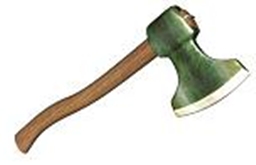 Because of REH’s broad diversity in writing, there are a multitude of areas to explore. And as you know from our ‘Discovering Robert Howard’ series, there are a lot of folks who write excellent stuff on so many different areas. Another example is today’s poster, Morgan Holmes. If you’re interested in what I think of as ‘military stuff and Conan,’ he’s writing what you want to read. Like this post!
Because of REH’s broad diversity in writing, there are a multitude of areas to explore. And as you know from our ‘Discovering Robert Howard’ series, there are a lot of folks who write excellent stuff on so many different areas. Another example is today’s poster, Morgan Holmes. If you’re interested in what I think of as ‘military stuff and Conan,’ he’s writing what you want to read. Like this post!
The Cimmerians are one of the great barbarian peoples of the Hyborian Age. They are also off stage in the Conan stories, though they figure prominently in “The Hyborian Age” essay. Putting together an idea how the Cimmerians fought and perhaps how they looked is a bit of detective work and some supposition.
Robert E. Howard’s Cimmerians are descendents of refugees from Atlantis. From the Kull stories, the Atlanteans are a vigorous, warlike people. In a death grip with the Picts after the Cataclysm, they sink to apedom and then work their way back to barbarism from a sub-savage bestial existence. Tall, dark-haired, with blue or gray eyes, you can see the same type in Ireland today.
Cimmeria itself is described in the first version of “Phoenix on the Sword:” “It is all of hills, heavily wooded, and the trees are strangely dusky, so that even by day all the land looks dark and menacing.”
There is mention of cold winds and snow. Cimmeria is a hard land that breeds a hard people. Natural selection has produced a tough people inured to hardship. Names of Cimmerians given are all Gaelic. The Irish and Highland Scots are the pure blooded descendents of the Cimmerians thousands of years later according to “The Hyborian Age.”
A look at Howard’s sources on the Gaels gives an idea at how he imagined the Cimmerians to be based on those influences or sources. Conan of Cimmeria came a step behind Cormac MacArt, Turlogh O’Brien, Conan the Reiver, and Cormac FitzGeoffrey. P. W. Joyce looms large as the source for ancient Ireland. Howard had A Short History of Ireland and mentioned The Story of Ancient Irish Civilization. Howard also mentioned Giraldus Cambrensis, though probably through quotations by P. W. Joyce. He may have been familiar with Tacitus’ Agricola either directly or secondarily.
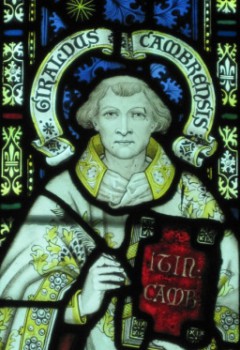 This passage from Hour of the Dragon describes the Cimmerians:
This passage from Hour of the Dragon describes the Cimmerians:
“I fought his ancestors of old,” muttered Xaltotun. “Not even the kings of Acheron could conquer them.”
“They remain a terror to the nations of the south,” answered Orastes.
Giraldus Cambrensis describes the medieval Welsh in similar terms:
They anxiously study the defense of their country and their liberty; for these they fight, for these they undergo hardships, and for these willingly sacrifice their lives; they esteem it a disgrace to die in bed, an honour to die in the field of battle.
“Notes on Various Peoples of the Hyborian Age” mentions “They fought on foot, mainly, and made savage raids on their neighbors to the east, north, and south.” Again this meshes with Giraldus Cambrensis:
This people is entirely bred up to the use of arms; for not only the nobles, but all the people are trained to war, and when the trumpet sounds the alarm, the husbandman rushes as eagerly from his plough as the courtier from his court. They pay no attention to commerce, shipping, or manufactures, and suffer no interruption but by martial exercises.
To deduce how the Cimmerians fought, first a look at the only live Cimmerian we have a chance to read about – Conan. Orastes describes Conan in Hour of the Dragon as “a true son of that savage race.” That means looking at Conan gives a good idea on how the Cimmerians fought.
Some observations– Conan is generally on offense. He likes getting in close and using a blade. Most of the time Conan is using a sword and variants such as hill knife and scimitar. He uses an axe in “Phoenix on the Sword” and also when fighting with the Gundermen infantry at the Battle of the Valley of Lions. He uses the bow in “Queen of the Black Coast” and briefly before being captured in Hour of the Dragon.
Twice he uses a bone to brain someone’s skull. In “Red Nails,” Conan efficiently makes a seven foot long thrusting spear for dealing with the dragon. The Cimmerians are often on the offense, making “savage raids” at their neighbors. That means they are fighting against Nordheimer shield walls, engaging in forest warfare with Picts, and facing the heavy cavalry of the Hyborians, the Bossonian archers and Gunderland pikemen. No one is capable of making inroads into Cimmeria. Venarium is wiped out when all the clans unite briefly.
The Cimmerians appear to be little different from the Gaels of Cormac MacArt or even Turlogh O’Brien. If we reverse engineer from the ancient Irish and classical Celts, the Cimmerian fighting method can be constructed that fits with Howard’s fragmentary comments. What can we deduce about the Cimmerian fighting method?
Axe: A cheaper weapon for barbarians to use is the axe. The Vikings used them, the Saxons took up the Dane long axe and the Slavs used a smaller type of axe. Giraldus Cambrensis said the axe was used in 12th Century Ireland more than the sword.
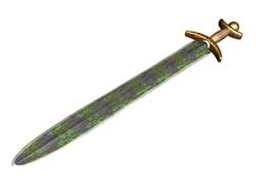 The Nordheimr use large axes similar to the later Dane long axe. The Picts use a small axe that is similar to the tomahawk. Cimmerian axes are probably similar to those used by the Irish in the Viking Wars, like the one that Turlogh O’Brien used.
The Nordheimr use large axes similar to the later Dane long axe. The Picts use a small axe that is similar to the tomahawk. Cimmerian axes are probably similar to those used by the Irish in the Viking Wars, like the one that Turlogh O’Brien used.
Swords: The sword is an esteemed weapon of Robert E. Howard and therefore the Cimmerians. Historically among barbarians, chiefs and leaders carried swords. So the Cimmerian clan chief and maybe his retainers/ bodyguards are sword wielders. Cimmerian swords are forerunners to the Celtic spatha. Swords, especially of the pattern welded kind, are expensive. It takes many hours of labor to create one. Barbarians do not have the military industrial complex that you find even in the high Middle Ages when swords become general issue. Conan is the son of a blacksmith and had access to swords, which were unavailable to many Cimmerians.
Spear: The spear is the most common weapon found in pre-gunpowder cultures. Spears are cheap to make and are formidable in the right hands. The Saxons conquered England with the spear. The Celts from the Classical period used two different types of spears with variations within those two types. First you had the lancea, a lighter throwing spear; a javelin. The Agrianians in Alexander the Great’s army, were deadly with throwing spears.
There might also be shorter “darts” used.
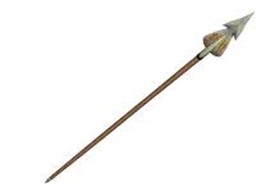 The stouter heavy spear called the gaesum wreaked havoc with the Greeks and Romans. That is for close-in fighting, though a gaesum could probably be thrown short distances. The gaesum is probably what the Irish called the craiseach used by the Firbolgs.
The stouter heavy spear called the gaesum wreaked havoc with the Greeks and Romans. That is for close-in fighting, though a gaesum could probably be thrown short distances. The gaesum is probably what the Irish called the craiseach used by the Firbolgs.
Bows: Conan states, “I learned archery among the Hyrkanians” in “Queen of the Black Coast.” The bow was not a weapon used much by the Celts in classical times. The Irish used them in the Middle Ages and the southern Welsh were famous for them. The Welsh used long bows made of elm instead of yew. They also used them as ambush weapons at short distances in their forests, instead of long range massed volleys. Conan’s clan being in the north, it may not have had access to yew or other good bow wood. Southern Cimmerian clans may use the bow in the Welsh manner.
Other projectile weapons would include the sling, which is very cheap to make. The Celts used throwing stones and there is no reason not to think that the Cimmerians used them. A properly thrown rock, especially one shaped, can be a deadly thing when it connects to someone’s skull.
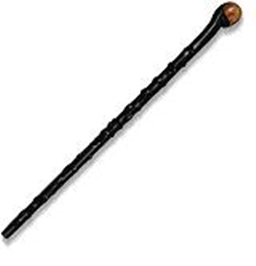 Shillelagh: The famous Irish walking stick. A formidable weapon if you know how to use it. The Irish had a form of stick fighting called Bata. There is also evidence of a hand-to-hand martial art that the Knights of the Red Branch were trained in. No doubt this was handed down from their Cimmerian ancestors.
Shillelagh: The famous Irish walking stick. A formidable weapon if you know how to use it. The Irish had a form of stick fighting called Bata. There is also evidence of a hand-to-hand martial art that the Knights of the Red Branch were trained in. No doubt this was handed down from their Cimmerian ancestors.
Armor: The Celts may have invented mail. Again, the clan chiefs and some warriors are probably armed with mail. The average tribesman is more likely to be wearing layered linen, which can be light and effective protection. Many of the Greek Hoplites used linen armor instead of bronze. Leather cloaks would also be used. Cimmerian clothing is a mix of linen and wool, both locally produced.
Helmets: Conan uses a horned helmet in “The Frost Giant’s Daughter,” “Queen of the Black Coast,” and “Beyond the Black River.” The Cimmerians might be as addicted to horned helmets as the Nordheimr. Or it could be that Conan likes the look.
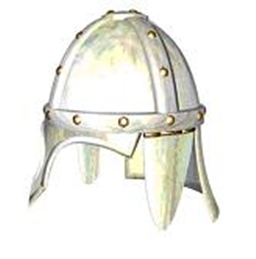 Cimmerian mustering probably also included equipment taken off of dead enemies or stolen in plundering raids. A Cimmerian host would include a motley array of Nordheimr and Hyborian weapons and armor. The Medieval Welsh saw service as a privilege and not as an obligation.
Cimmerian mustering probably also included equipment taken off of dead enemies or stolen in plundering raids. A Cimmerian host would include a motley array of Nordheimr and Hyborian weapons and armor. The Medieval Welsh saw service as a privilege and not as an obligation.
Howard mentions the Cimmerians fought on foot mainly. The hill country of Cimmeria was not conducive for breeding of horses nor for cavalry operations. Punitive expeditions by the Aquilonians were probably ambushed in similar manner that the Welsh dealt with English armies in the Middle Ages. That doesn’t mean they did not use horses. Those wealthy enough to be mounted may have acted as scouts and also hit the flanks or from behind enemy forces. Aquilonian mounts were no doubt a prime item for plunder.
The Cimmerians probably moved fast, unencumbered by all the armor the Hyborians used. Their tactics would involve getting to grips with their craiseachs and spathas as soon as possible. They were probably the finest medium infantry of the Hyborian Age. They moved faster than the Nordheimr. A Gunderman pike phalanx ran the risk of Cimmerians getting under the pikes and then cutting down the pikemen. Hyborian infantry is generally of middling to poor quality. Any hand-to-hand combat with Cimmerians is going to be disastrous.
A problem in dealing with the Aquilonians is the combination of Bossonian archers and mounted knights. If you bunch up to form a solid line to deal with cavalry, the Bossonian archers can then devastate the line with arrow volleys. If the Cimmerian force disperses, they were prey to a mounted charge.
Fletcher Pratt remarked on the mounted knight in The Third King (William Sloane, 1950):
With lance in rest, equipment, horse and person formed a locked system which delivered at the point of impact exactly three times the punch of a modern military rifle-bullet. Anything that point hit was transfixed or went down. Even after the knight lost his lance or his momentum, he could deliver from the stirrups a blow with sword, mace, or gisarme that very few men were prepared to withstand.
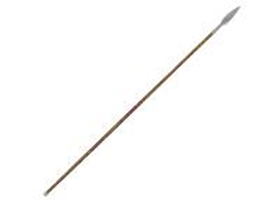 The Hyborian cavalry is what protected Hyperborea, the Border Kingdom, Aquilonia, and Nemedia from large-scale Cimmerian incursions. There is a mutual assured destruction scenario. Cimmerian raiding parties can be destroyed in the open in Hyborian territory. Hyborian cavalry is of no use in the Cimmerian hills.
The Hyborian cavalry is what protected Hyperborea, the Border Kingdom, Aquilonia, and Nemedia from large-scale Cimmerian incursions. There is a mutual assured destruction scenario. Cimmerian raiding parties can be destroyed in the open in Hyborian territory. Hyborian cavalry is of no use in the Cimmerian hills.
So a Cimmerian war band would include a clan or tribal chief and retainers carrying swords, varying degrees of armor, helmets, and a few horses. The majority would be on foot, clad in linen, wool, or leather, carrying two or three throwing spears and a gaesum, and shield for combat. Most would have large daggers and some would have axes. There might even be a distinction between Galloglachs (heavy infantry) and Kerns (light infantry).
In classical times, the Celt Brennos (Bran) twice defeated Macedonian armies including killing Ptolemy Keraunus (the thunderbolt). These “Celtic” armies were probably a mix of Celts, Illryians, Thracians, Sarmatians etc led by Celts. None the less, they were grinding up the same armies that had conquered for Alexander the known world one generation before.
Earlier Cimmerian hosts punched through the Aquilonians once they lost their archers and probably a good part of their heavy cavalry. They went through the Nemedian Aesir, Picts, and Hyrkanians to ultimately destroy Turan. The Cimmerians were the Army Rangers or Airborne of the Hyborian Age. They were not the heaviest equipped but they moved fast and hit hard.
Prior posts in our ‘Discovering Robert E. Howard’ series:
REH Goes Hard Boiled by Bob Byrne
The Fists of Robert E. Howard by Paul Bishop
2015 Howard Days by Damon Sasser
Solomon Kane by Frank Schindiler
REH in the Comics – Beyond Barbarians by Bobby Derie
Rogues in the House by Wally Conger
By Crom – Are Conan Pastiches Official? by Bob Byrne
The Worldbuilding of REH by Jeffrey Shanks
Re-reading ‘The Phoenix on the Sword” by Howard Andrew Jones & Bill Ward
Ramblings on REH by Bob Byrne
Pigeons From Hell by Don Herron
Re-reading “The Tower of the Elephant” by Howard Andrew Jones & Bill Ward
El Borak by David Hardy
Westerns by James Reasoner
Re-reading “Queen of the Black Coast” by Howard Andrew Jones & Bill Ward
Re-reading “Black Colossus” by Howard Andrew Jones & Bill Ward
And you know we’re not done yet!
Morgan Holmes has been called the world’s greatest expert on sword and sorcery. He is the former official editor of the Robert E. Howard United Press Association. He has been published in The Cimmerian, Robert E. Howard: Two Gun Raconteur, The Robert E. Howard Companion, The Dark Man journal, and Blood N’Thunder among other publication. By day he is a podiatrist who battles toenail fungus and by night investigates obscure sword and sorcery. He blogs at Castaliahouse.com.
You can read Bob Byrne’s ‘The Public Life of Sherlock Holmes’ column here at Black Gate every Monday morning.
He founded www.SolarPons.com, the only website dedicated to the ‘Sherlock Holmes of Praed Street’ and blogs about Holmes and other mystery matters at Almost Holmes.
His “The Adventure of the Parson’s Son” is included in the largest collection of new Sherlock Holmes stories ever published.
In a scenario where two warriors are confronting one another, the rules of engagement in ‘The Tain’ are highly formal. Spears were thrown – long (ie, javelins) and short*, rather like the Roman pila – then the two warriors scrambled out of their respective chariots and engaged at close quarters with swords. Being able to fight while up to your waist in a river was regarded as a test of a warrior’s skill. If you really wanted to make a point, you beheaded your opponent after killing him.
Cuchulain frequently uses a sling, like some latter-day David, and one of his opponents, Natchrantal, has throwing sticks fashioned out of holly. There’s no record of such weapons ever being used in Ireland, although they were popular in antiquity: picture something about the length of a man’s arm, around two inches in diameter, and sharpened at both ends. In a token nod towards realism, holly is a heavy wood.
Overall, the historical accuracy of ‘The Tain’ is questionable (the general consensus now is that it was an 8th century historical pastiche) and various anomalies have been cited – for example, there’s no evidence of chariots in Ireland, and it’s very difficult to decapitate anybody with a leaf-shaped sword, the traditional sword of the Irish celts.
*My brother, an archeologist, tells me that celtic spears may have been designed to be unusable after one initial throw – the iron shank bending on impact – presumably to prevent your opponents using your own weaponry against you.
This is a pretty interesting analysis, especially since I play Reality Simulations, Inc play-by-mail game (been around since the 1980s), Hyborian War. I’ve never played Cimmeria in the game, but have played Asgard. And in Hyborian War, the Aesir are some of the most formidable troops. I wonder if Morgan Holmes has ever played RSI’s Hyborian War?
I have never played Hyborian War. I want to read the booklet that Lin Carter co-wrote for one version. I have thought of getting one of the Conan board games to play with my kids.
[…] An excellent article on the martial aspects of the Cimmerians: https://www.blackgate.com/2015/10/11/discovering-robert-e-howard-morgan-holmes-on-armies-of-the-hybo… […]